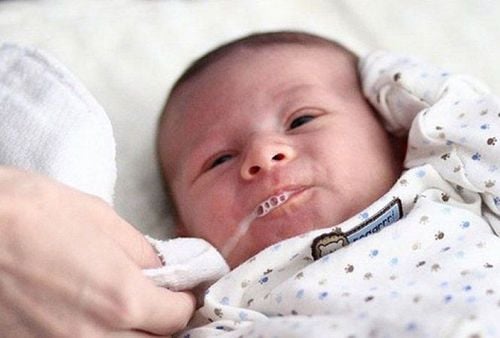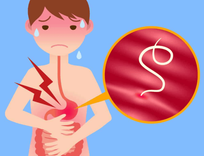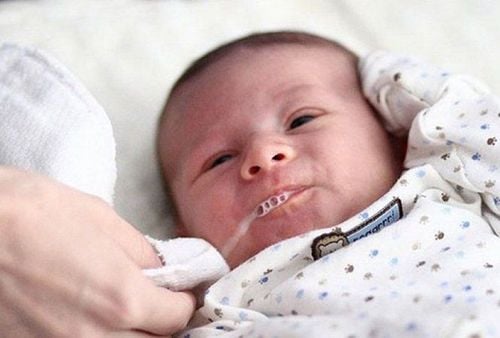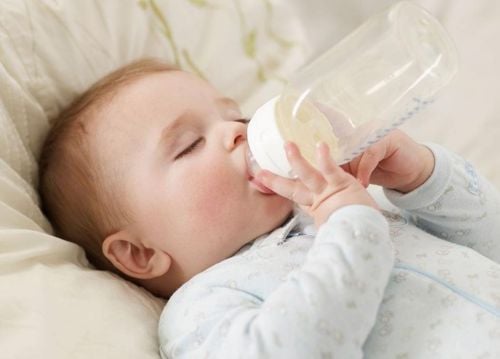This article is expertly advised by Dr. Phan Ngoc Toan, an Emergency Resuscitation Doctor in the Department of Emergency Resuscitation at Vinmec Da Nang International General Hospital.
Choking on milk is a common incident in pediatrics and can be very dangerous. When milk enters a baby's airway, it can obstruct breathing, potentially leading to respiratory failure, cardiac arrest, apnea, or even death. Therefore, parents need to understand how to effectively rescue their babies from choking on milk.
1. Overview
Choking occurs when milk spills into the airway, leading to a baby choking, experiencing difficulty breathing, turning blue, or potentially stopping breathing altogether. If not treated promptly, this situation can be life-threatening.
Causes of Choking on Milk:
- Babies may suck or eat in an improper position.
- Breastfeeding while the baby is crying or coughing can contribute to choking.
- An excessive flow of breast milk can cause the baby to swallow too quickly.
- A nipple with a hole that is too wide can result in an overwhelming flow of milk.
Prematurely born babies may have underdeveloped sucking and swallowing reflexes. - Children with congenital defects in the oropharynx, such as cleft lip or cleft palate, are at higher risk.

Signs of a baby choking on milk: strong coughing during or after breastfeeding, milk coming out through the nose or mouth, choking, turning blue, appearing panicked, crying, and having a limp or stiff body, etc. If these signs occur, it could lead to serious complications such as respiratory arrest, cardiac arrest, or even death.
2. First aid for infants choking on milk
When a child shows signs of choking on milk, such as coughing or inability to breathe, parents or babysitters need to remain calm. They should follow these first aid steps, which apply to any situation involving foreign objects in the airway, including choking on milk.
2.1. If the child is conscious
Step 1: Immediately call for support from relatives or medical emergency (call, turn on speakerphone mode, and follow instructions). The rescuer can sit or kneel depending on conditions.
Step 2: If convenient, remove the child's shirt to expose the chest
Step 3: Position the child on their stomach, ensuring that their head is lower than their chest. Rest their head on the inside of your forearm, which should be placed on your thigh. Keep the child's head and chin aligned in a straight position, and avoid applying pressure to the soft tissue of the oropharynx.
Step 4: Use the heel of your hand to PAT 5 TIMES between the child's shoulders in a direction from top to bottom to front.
Step 5: After patting the back, use your other forearm to place on the child's back, your hand holding the head and neck firmly.
Step 6: Carefully turn the child over (holding the head and neck firmly), keeping the child lying face up on the inside of the forearm against the thigh. Keep their head lower than their body.
Step 7: PRESS THE CHEST 5 TIMES at a position 1⁄2 below the sternum, just below the intermammary line. Each time you push your chest for about 1 second, try to create enough pressure to expel the object.
Step 8: Repeat the cycle of 5 back pats and 5 chest compressions until the object is removed or the child does not respond..

2.2. If the child is unconscious
Step 1: Immediately call for support from relatives or medical emergency (call, turn on speakerphone mode, and follow instructions). The rescuer can sit or kneel depending on conditions.
Step 2: Immediately perform chest compressions - support the child's breathing with the 2-finger technique (see picture below) with the following requirements:
Frequency:
- 30 compressions – 2 rescue breaths (If alone)
- 15 compressions – 2 rescue breaths (If there are ≥ 2 rescuers)
Depth of chest compression: 4cm or 1/3 of the anterior and posterior diameter of the chest
Before you attempt to give rescue breaths, check the child's mouth and throat for any foreign objects.
- If you see a foreign object that can be easily removed, use your hand to take it out. Avoid blindly reaching into the child’s mouth, as this may push the object further down.
- If you do not see any foreign object or are unsure, continue to provide emergency care.
Step 3: After approximately 2 minutes of performing chest compressions, call 911 if there is no one available to assist you.
2.3 Mouth-to-mouth and nose breathing techniques for young children
Step 1: Ensure the airway is open by positioning the head using the Head Tilt-Chin Lift technique.
Step 2:
- For Mouth-to-Nose resuscitation: Take a normal breath, then cover the child's mouth and nose tightly with your mouth.
- For Mouth-to-Mouth resuscitation: Take a normal breath, cover the child's mouth tightly with your mouth, and pinch their nose firmly with your thumb and index finger. Rest the palm of your other hand on the child's forehead.
Step 3: Blow air into the child’s mouth for 1 second, and watch for the chest to rise. Repeat this process two times.
Step 4: If the chest does not rise, repeat the head tilt and chin lift technique to adjust the head position.
Step 5: If the chest still does not rise, switch to the mouth-to-mouth resuscitation technique as described in Step 2.
3. Measures to Prevent Choking on Milk in Children
Choking on milk is a common phenomenon among newborns. However, with proper care and attention, mothers can prevent this issue. Here are some important guidelines:
- For breastfeeding: Hold the baby in a position that supports a high head posture while breastfeeding. Feed the baby slowly and avoid rushing, especially when feeding premature infants. Monitor the baby during breastfeeding; ensure they are swallowing after sucking. If the baby seems disinterested, has milk pooling in their mouth, or starts coughing or crying, stop feeding immediately.
- For bottle-fed babies: Use a nipple with a narrow hole, making only 1-2 small openings with the tip of a safety pin. When feeding, tilt the bottle at about a 45-degree angle. This allows the milk to fill the nipple hole, reducing the risk of the baby swallowing too much air, which can lead to regurgitation after feeding.
- After feeding: Hold the baby in a face-down position against your shoulder or chest for 15 to 20 minutes. Gently pat the baby’s back to help them burp, as this can prevent gas buildup and reduce the risk of choking. If you notice the baby spitting up, immediately turn their head to one side and wipe the milk from their mouth.
- Notes: Do not breastfeed the baby while they are sleeping, crying, or coughing. Avoid making jokes or playful gestures during breastfeeding, as this can cause the baby to laugh and potentially choke on the milk. For babies who tend to vomit frequently, it’s advisable to offer smaller amounts of milk during each feeding while increasing the number of feedings per day, etc,
In case of choking, it is essential to administer proper emergency treatment to help the child quickly escape this dangerous situation. If you have followed the appropriate steps and the baby continues to show signs of coughing, turning blue, or having difficulty breathing, seek immediate medical attention at the nearest hospital.
Master Phan Ngoc Toan was an Internal Medicine Physician at Quang Tri General Hospital, and an Emergency Medicine and Intensive Care Doctor - at Hoan My Da Nang Hospital before working at Vinmec Da International General Hospital. Danang as it is today. Doctor Toan has extensive experience in treating adult resuscitation and emergency care and pediatric emergency care.
Please dial HOTLINE for more information or register for an appointment HERE. Download MyVinmec app to make appointments faster and to manage your bookings easily.
















